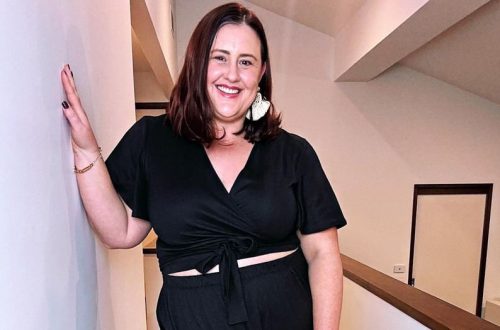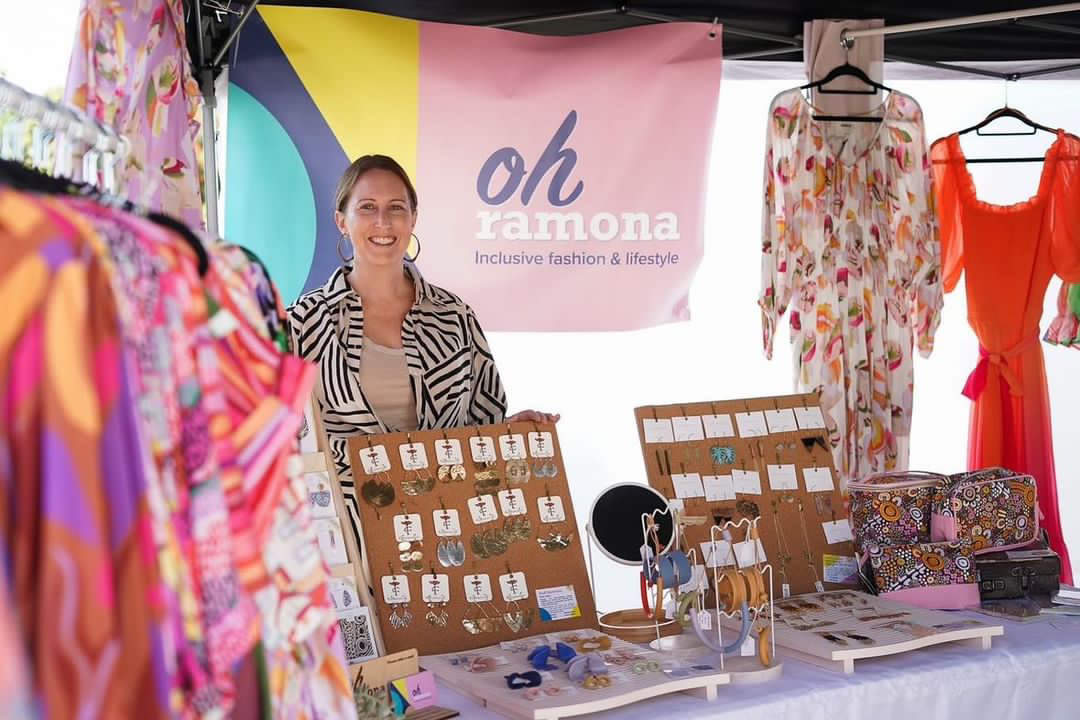
Ten things I’ve learned from selling at markets
Do you have a great new product you want to get in front of customers? Want to make some extra money to support your crafting habit? Having a market stall can be a great way to kick off your side hustle, and for some people, it can even become their main hustle.
I started selling at market stalls in October 2023, as a low-overhead way to soft-launch my new inclusive fashion boutique, Oh Ramona. Here are some of the things I’ve learned, that I hope can help you show up and sell at markets like a pro!
🔥 Hot Tip: If you’re short on time, skip down to the TLDR1 at the end of each section.
1. There are three main types of markets
Your product will determine which type you have access to.
Type 1: The makers’ market. These typically only accept stallholders who literally make their product themselves. They want to give market goers a chance to meet the artisan and support them directly. Some makers’ markets allow a small percentage of stallholders who aren’t makers, as long as their product fits the “handmade” and/or “local” ethos the market is promoting. But in general, someone like me who curates, rather than designs or makes, their product, will not be accepted to makers’ markets. This can cut you out of a very lucrative segment of the market economy. In my area – Victoria’s Mornington Peninsula – some of the biggest and best markets are run by Craft Markets Australia, an organization that holds only makers’ markets, so as a non-maker, I’ve missed out on being able to do those particular markets. Likewise with the Big Design and the Finders Keepers markets – these are huge national markets that draw tens of thousands of shoppers, but are only open to vendors who design or make their own product.
Type 2: The community market. These are the markets I’ve mostly been doing, run by community organizations like schools, churches, local councils and Rotary clubs. Community markets are fundraisers for their organization, and therefore are typically less selective when it comes to the types of product you sell and whether or not you are its maker. That being said, some do have certain criteria you’ll need to adhere to, e.g. one market I do regularly has no second-hand items allowed. They will also try to manage the number of sellers of a certain type of product, e.g. jewellery or candles, to ensure good variety for market goers, so if you apply in one of these categories, you may not be approved if they already have a lot of vendors in those categories. Community markets tend to be well-supported by their local community – I’ve found in particular, primary school markets are well attended by their school communities. And they’re typically very affordable, with stallholder fees of around $30-50 per market (and sometimes even a discount for first time stallholders).

Type 3: The niche market. Niche examples include vintage, wedding, baby, boho, plus size, female founder, etc. These can be very competitive to get into, typically cost a bit more to attend as a stallholder, but can be very lucrative if your product fits neatly into the niche. They’re also often privately run, and come with a higher stallholder fee (I’ve seen fees of $100 up to $1000!), but on the other hand, are usually very well organized and promoted.
TLDR: If you know you want to do markets, but don’t yet know what you want to sell, consider something you make, bake or grow yourself, as this will give you access to almost every market that’s out there.
2. The weather is not your friend
And neither will the weatherman be!
Unless you’re exclusively doing indoor markets, you are going to encounter every possible weather condition – even if you only do markets in summer! You will at first be shocked by how even a light breeze can blow your product stands over or blow your actual product off the table. And by how many weights and sandbags you’ll need to ensure your marquee doesn’t blow into the sea, or onto the nearby train tracks (true story from a fellow stallholder). 🔥 Hot tip: if at all possible, peg it into the ground! You’ll also need weights and sandbags for things like clothing racks, jewellery stands, mannequins, mirrors, gazebo walls, and anything else you want to remain upright. After a very windy, very stressful day spent holding my marquee down with my own body to avoid catastrophe, I’ve adjusted my set-up to include:
- 4 Gazebo Base Weights filled with mostly sand and a bit of water (wet sand is heaver than both dry sand and just water). I originally had these filled with water, but it wasn’t heavy enough when in a location where I couldn’t peg down the gazebo. These are a bit of a pain to transport, as the plugs at the top don’t make a perfect seal, so your filling can tip out and make a mess of your vehicle if you’re not careful. Since the first mishap, I always transport them upright in the rear footwells and it’s been okay.
- 4 Awning Sandbags – I bought a very cheap crummy set that some of the hook-and-loop fasteners ripped out of immediately – would not recommend. These are the awning sandbags I wish I’d bought (and still might!). These can be used to add extra weight on your gazebo poles, or to weigh down lighter items like a free-standing mirror, or mannequin.
- 6 Homemade Sandbags – fill a thick reusable plastic shopping bag with sand and tie up the top. Then put the filled plastic bag inside a reusable grocery tote bag and tie the handles together. Living near the beach, sand is easy to come by; if you’re not that lucky, Bunnings sells 20kg bags of sand, various brands for around $10 each or less. These are quite heavy and are great for putting on the base of my clothing racks to avoid them tipping over (this has happened a couple of times and you almost want to cry when it does), and also at the bottom of the gazebo walls to stop them flapping into the tent and knocking over your product.
- Two 4kg hand weights / dumbbells – I use these to weigh down the bases of my jewellery stands, so they don’t tip over in a wind gust and spill the jewellery everywhere. You’ll need to find what works with your particular setup, but if there’s something you can weigh down, I recommend, do so!
Yes – I use every single one of these at every single market. And sometimes I even wish I had a couple more.
I also have 3 gazebo walls that can be added if needed to block wind or rain. I always use one at the back to form part of my fitting room, and often use one on the side as well. Occasionally I’ve needed all three. In hindsight I should have bought two solid walls and a third with a window / clear section.
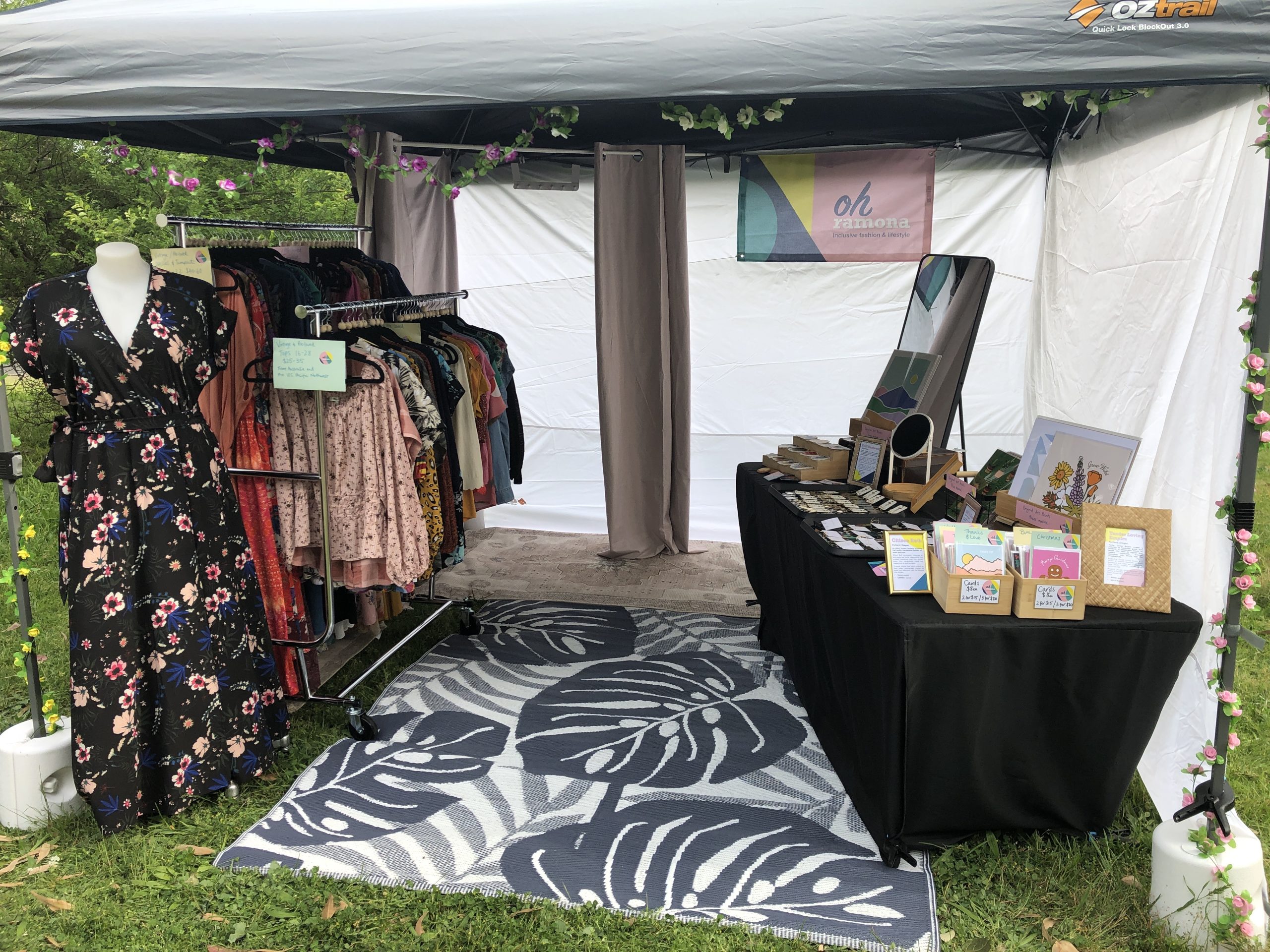
Rain can also be problematic. Aside from discouraging market visitors, it can also cause potential damage to your product (damp, mould, warping, running, tarnishing, etc.) and make packing up much more difficult as everything is wet trying to cram back into your vehicle and not damage your product. Where possible, transport vulnerable product in watertight plastic tubs and consider transparent weather covers for your stall table, stands, racks, etc.
I always watch the forecast for the local area closely in the days leading up to the market, but have found predicting wind and rain to be a very inexact science, especially down here on the coast. A 95% chance of no rain usually turns out to be several hours of steady rain when it’s forecast for market day. And expected light winds often somehow show up as blustery on a Saturday morning. So, plan for every possibility, no matter the forecast.
Of course, you can also have gorgeous sunny days, but even these can be challenging if it’s a little too hot for people (or yourself!) to comfortably enjoy the market. Ideally you want sunny or overcast and low 20s but it’s not something you can control, so be ready for everything and make the best of what mother nature throws at you.
TLDR: Plan for and expect wind and rain on market day and remember, there’s no such thing as too many sandbags!
3. It’s really a two-person job
But… you can do it alone if you really have to.
If you have a very simple setup, e.g. one or two trestle tables with not a huge amount of product, you’ll probably be ok on your own. The hardest part will be getting the gazebo up and down. Not an easy feat by yourself. 🔥 Hot tip: practice at home at least once first. You don’t want to be reading instructions when you’re at an unfamiliar venue, on the clock.
My gazebo got easier to set up after the first few times because a) the mechanisms loosened up a bit, and b) I got better at it. If, like me, you have a complex setup that includes clothing racks with 100+ garments, a makeshift fitting room constructed from curtains and a rod across the corner of the gazebo, plus a trestle table with small items like jewellery, you will be pushing it to get set up within the allocated 1.5-2 hours and, if on your own, will often be the last stallholder to exit the venue. I’ve also found the wind tends to pick up during the day, so even if the morning set up wasn’t too difficult, the afternoon pack-up becomes hectic as the wind tries to turn my gazebo into a giant kite as soon as I remove the sand weights. I’ve also learned to keep the weights on my clothing racks until I’ve removed all the clothing to avoid capsize events.
It can also be very helpful to have someone watch your stall while you go to the loo or eat. If you can’t plan for a friend to relieve you somewhere near the mid-point, be brave and ask a neighbouring stallholder. After all, you’re all in the same boat!

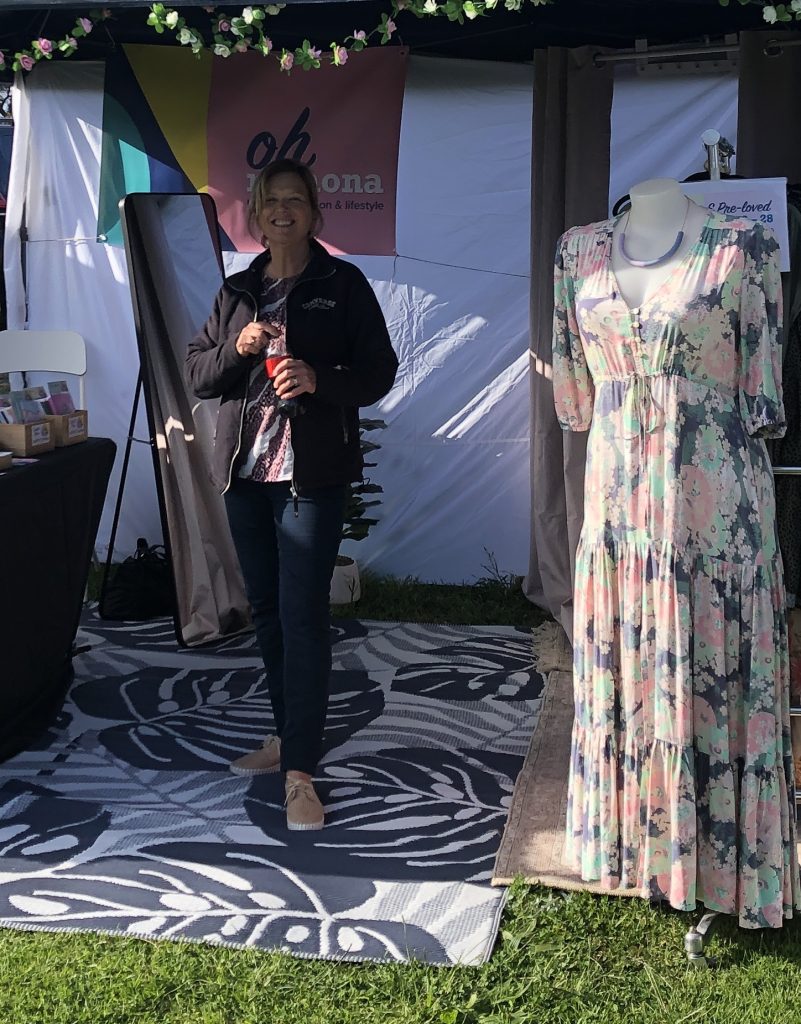
On the subject of food – don’t forget to pack plenty of water and some snacks. Protein bars, nuts, bananas or apples – things that can handle a warm day and can be eaten in stages if needed without leaving you too messy. A few other things to add to your kit: wet wipes, sunscreen, bug spray, tissues, band aids, portable phone charger.
TLDR: Solo works for a very simple setup, but when you add complexity you’ll need help.
4. You don’t need a van
A station wagon or SUV will do the job!
If you’re planning to do markets as your main form of selling to customers, by all means invest in a van as the load in & out will be so much easier. But if, like me, you’re viewing it as a short-term way to test the market, you can get away with a larger passenger vehicle.
I have a used Subaru Outback #notasponsor and it’s remarkable the amount I can fit into it, if I pack carefully. It has one of the highest cargo capacities out there, and really easy level to pop the back seats down. But it does have its limitations – I can fit exactly enough for a typical 3m by 3m setup, but I wouldn’t be able to have a double stall, as there’s no way I’d fit another gazebo, table or garment rack in, let alone the product to fill them. So, I can only ever offer what fits into a 3×3 space. Plus, I am incurring wear and tear and extra kms on my vehicle. But on the other hand, I’m saving in petrol and parking headaches by not driving around a commercial van every day.
🔥 Hot tip: Make sure you turn off all the interior lights before loading in or out – otherwise you’ll be putting in a roadside assistance call before too long!
TLDR: An SUV or wagon holds enough for a 3m x 3m market stall. Don’t forget to turn the interior lights off!
5. Invest in decent gear
You don’t want to pay for things multiple times over.
Because I was only planning to do markets for one season, I didn’t want to spend over $500 on a commercial gazebo, but I knew it would need to withstand regular use under tough conditions, so I invested in a good quality consumer-grade one. Even that hasn’t lasted the season – I’m now having to gaffer tape up two of the posts because their locking mechanism is jammed, and the “easy” pop-up top no longer works properly and one side of the roof sags down kind of sadly. I should have gone with a commercial option. I also didn’t think about how its colour would go with my branding – I was focused on price, quality and ease of use. Before you buy your gazebo, go to a market and scope out which ones you like the look of, and will work with your product and/or brand colours. In hindsight, a white gazebo would have elevated the look of my stall. If you want to go all in, you can even get gazebos printed with your branding & logo! I probably wouldn’t go that far for one summer – a custom vinyl banner from Vistaprint was under $40 and did the job.
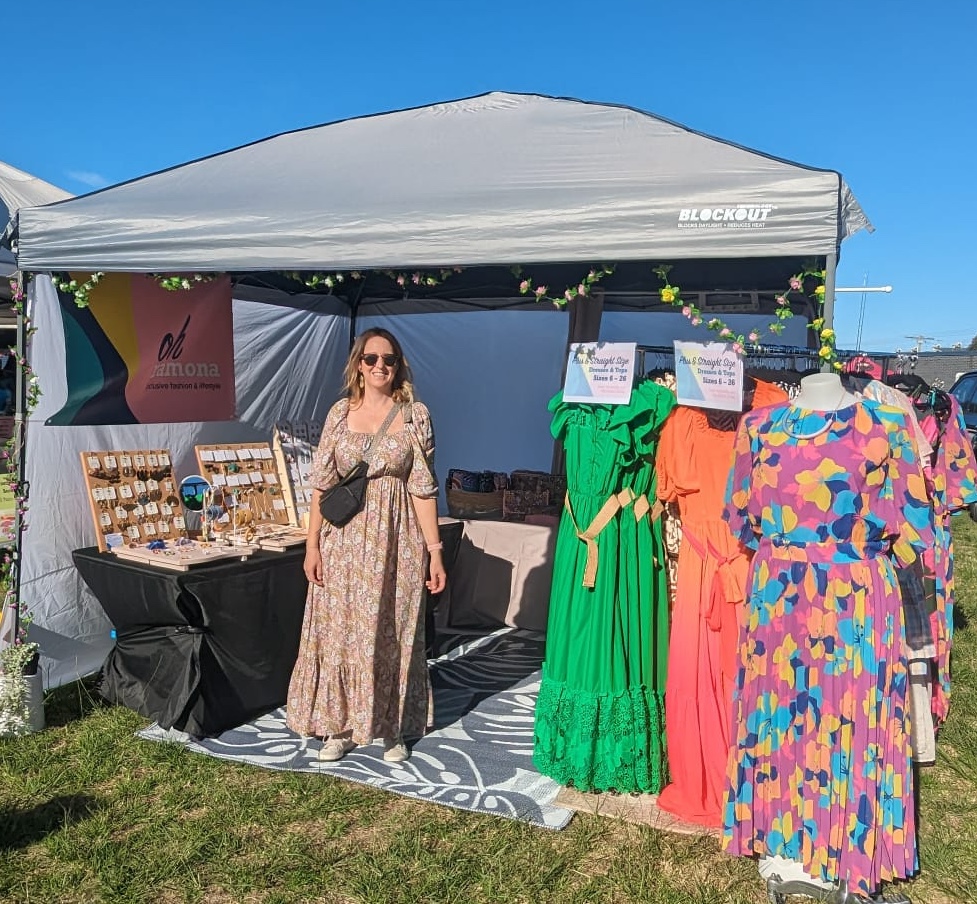
I’m glad I spent a little more on my clothing rack – I bought an Artiss commercial grade collapsible double rack (this is a bargain BTW – I paid more) that holds over 150 garments. I’ve also been supplementing with some smaller IKEA racks which are flimsy and require an allen key each time to assemble and disassemble. Would not recommend these – go with the commercial ones!

There are areas you can save money – think about what you can thrift, repurpose or upcycle for product presentation. Facebook marketplace is a gold mine. And / or watch for sales – I found some lovely painted wooden boards on clearance for $3 each to display jewellery on.


You’ll need an easy way to take payments – I looked into lots of options and landed on the one almost everyone uses – turns out Square is popular for a reason. You can buy the card reader from multiple places including Officeworks and JB Hi-Fi, and it connects easily to your phone. Plus, with Square you can create an online store, and connect your inventory, allowing you to keep an eye on incoming orders and make sure you don’t sell an item at the market that someone’s already bought online (important if you have one-of-a-kind items or very low quantities of each). After a couple of markets and seeing what other vendors had, I also invested in a cute little custom Square reader & business card holder that helps me look profesh and helps customers know where to tap their card or phone. Speaking of biz cards – I also got mine done through VistaPrint and am happy with them. Watch for their sales – you can save a lot on biz cards and stickers if you order at the right time.
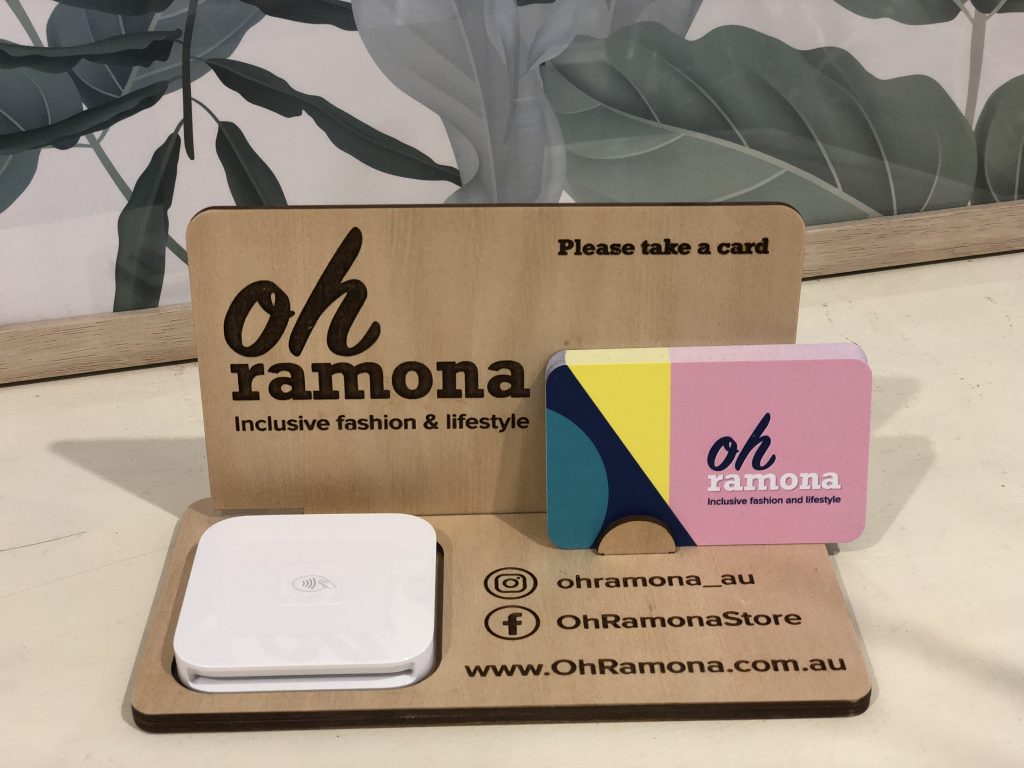
TLDR: Invest in quality big ticket items like your gazebo and clothing racks. Find DIY ways to save in other areas like product presentation.
6. Know your product
Your customers need and expect you to know your offering inside out.
Be proactive in sharing what’s unique about your offering. Use signage and visuals to communicate distinction, e.g. “Handcrafted in Australia” or “Made from sustainable materials.” Even more important, speak to it. You’ll get really good at your elevator pitch – why should a customer care about your product, in one sentence. Notice what details customers respond to, and what questions they ask. Tell your story – what do you do and why are you so passionate about it? And be ready to provide follow-up information – exactly why is the product sustainable? How does that particular garment fit? Are those ear wires hypoallergenic?
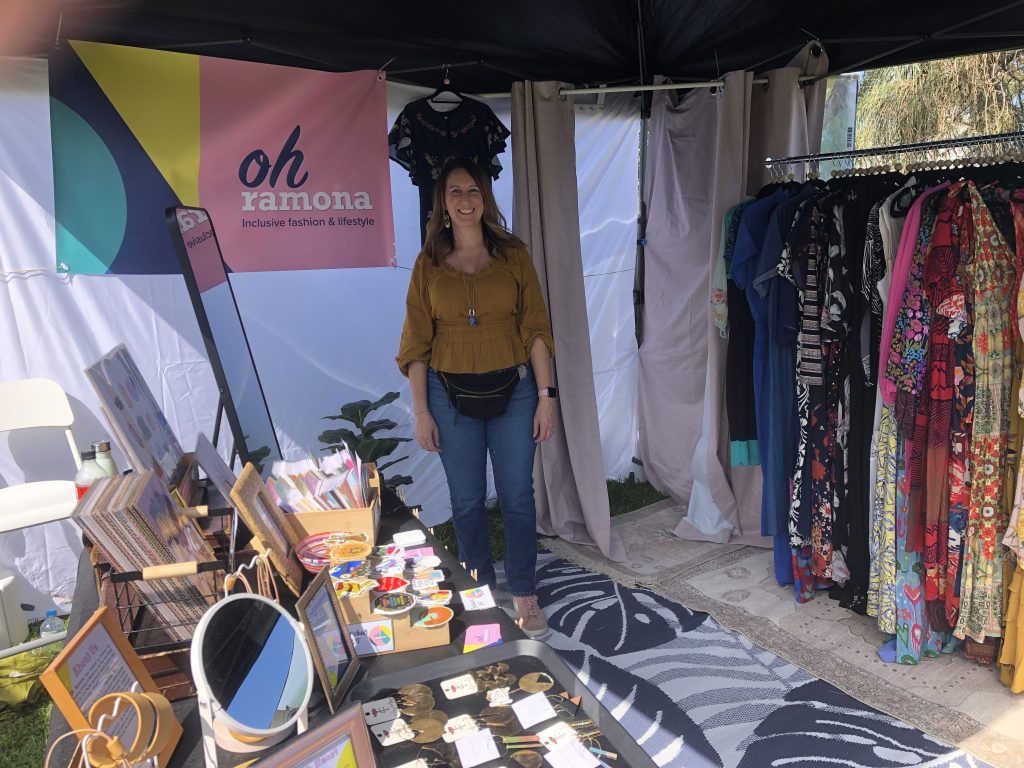
TLDR: Know your offering inside-out and proactively share your story and passion, as well as product details, with your customers.
7. Other stallholders are awesome!
It’s easy to see them as competition, but actually, you all benefit from each other doing well.
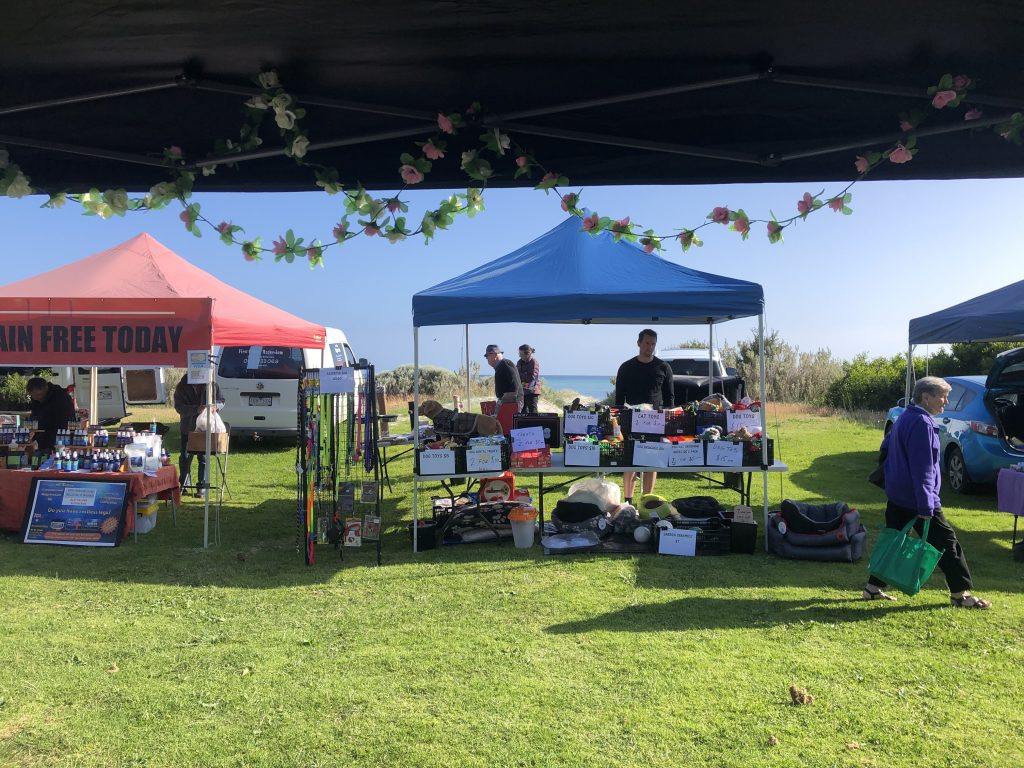
So, get to know your neighbours, and ask lots of questions to learn from their experience. They’ve often been doing that market for months or years, and know all the ins and outs. And sometimes, they’re selling really cool stuff! It’s also more fun if you have some buddies to check in on and share the joy of a fantastic day, or the disappointment of a miserable one. I’ve found almost every fellow stallholder to be willing to share info, show you the ropes and help when needed. Also – watch what they do with their stalls and adopt what works well to improve your own stall!
It also pays to build a relationship with the market organizers. On the day, try to find the person you’ve been corresponding with online and thank them for the opportunity. After all, they’re the ones who’ll decide whether to give you a gig next time or make way for someone else. And as they get to know you, they’re more likely to give you a better position within the market (yes, there are good and bad spots to be in!) and maybe even recommend you to other market organizers in future.
TLDR: It’s easier and more fun when you get to know your fellow stallholders and market organizers.
8. Many people are looking for a bargain
But not all!
Lots of people do indeed go to markets looking for a steal, but some people are there to connect with the makers and find unique, quality items. I’ve had several people tell me my prices are too high, and several other people fall in love with an item (or two) and not even blink when they see the price. Every customer has their own set of priorities and values, so don’t get sucked in to underselling your product, just because the stalls around you are cheap. If your product is good and priced fairly, it will find its audience, even amongst all the bargain hunters.
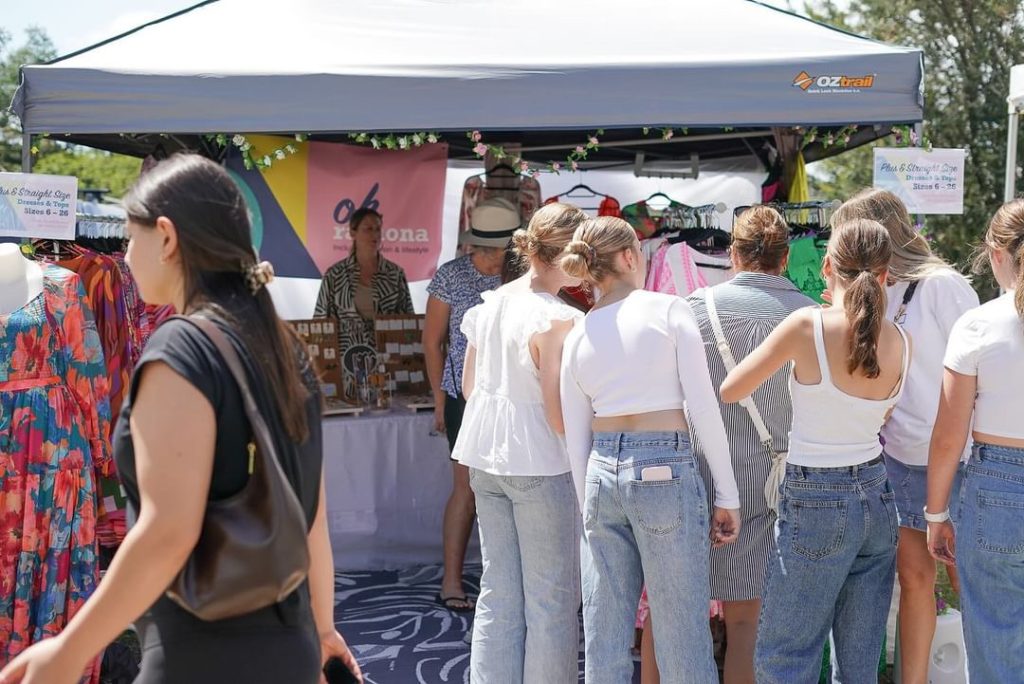
Of course, if your items are on the pricier side, offering cheaper alternatives can be a good way to please more customers and increase your sales. One clever example I’ve seen is Kayla’s Candle Co – Kayla sells beautiful, handmade soy candles at lots of markets in the Melbourne area. In case people aren’t prepared to invest in a large candle, Kayla offers $5 sample tins – giving customers virtually no excuse to leave without her beautiful product.
Personally, I’ve found that having apparel available across a range of price points works well. And popping a little “market only” discount on pricier items can help grease the wheels a little bit when needed. Or being prepared to give a small discount if asked for – this can sometimes seal the deal.
TLDR: Don’t bow to pressure to undersell your product. Price your items fairly and offer options at various price points.
9. It takes resilience
You will have good market days and bad ones.
On the good days, you feel like a million bucks! “Markets are the best!!!”
On bad days, when you’re windblown and soaking wet with not a dollar to show for it, you start questioning all your life choices that led you to this moment. “I’m never doing another market as long as I live.”
But it’s essential to pick yourself up and get back out there. Don’t let one, or even two, bad days defeat you. Because there will be better days. I’ve had days of zero sales, and I’ve also had days of four-figure sales, at the exact same markets with the same product mix. Weather, seasonality, the economy, local events and a bit of random luck can all impact your sales week to week.
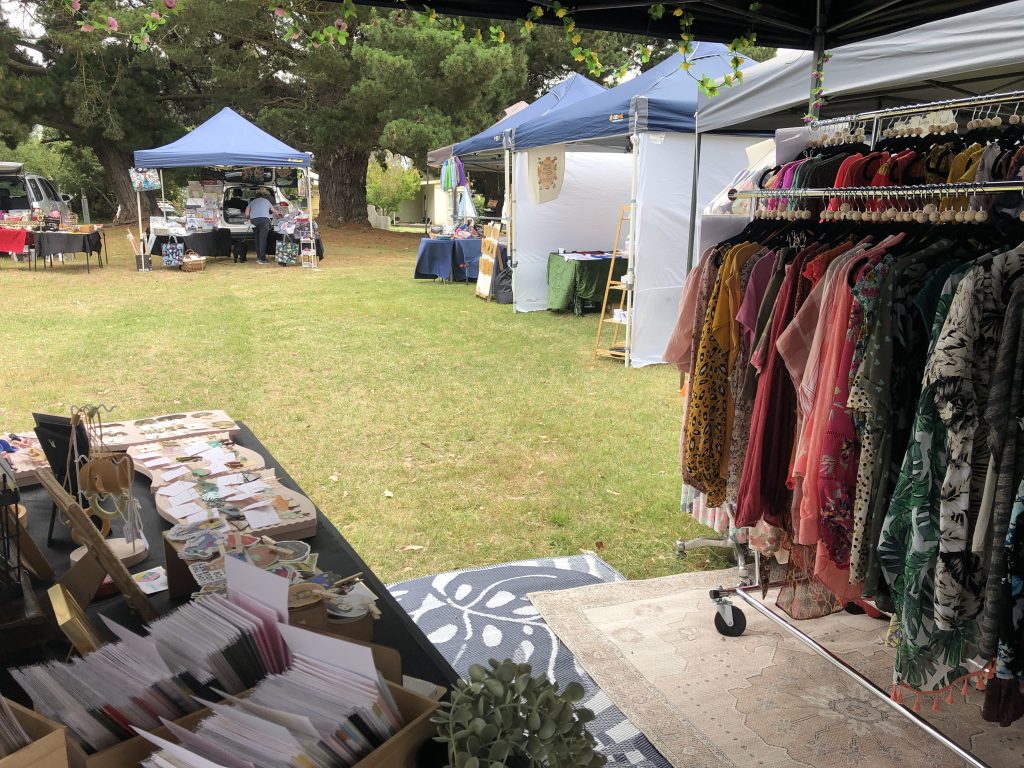
If you have say, three or four markets in a row with very low sales, that might be time to think about what could need adjusting. Is your product what market goers in that area are looking for? Is it priced right? Is your display clear and inviting? Is it easy to see what’s being offered? Is it unique compared to other stalls? Are you being open and friendly, encouraging people to come in and check out your wares? And is the market itself well promoted and attended?
Towards the end of each market day, check in with other vendors nearby – how did they do? Often you’ll find their experience was similar to yours. If not, turn inward and see what you can improve for next time.
TLDR: A bad day can kick you in the guts. But stick with it, and as long as your marketing mix is right, you’ll also have great days.
10. It’s a great way to connect with and learn about your customers
My absolute favourite thing about doing markets is getting to see people’s reaction to the product, and chat with them about their needs.
Especially if you have a predominantly online business, this is an excellent opportunity to see customers interact with, and give you feedback on, your product.

It’s thrilling to see the delight on my customers’ faces when they realize I have multiple options for them, no matter their size. And that I understand how important fit is to them – so much so that I’ve made them a fitting room in my stall. I’ve learned so much from this one-on-one time with market goers, for example, long, maxi dresses don’t work for everyone – shorter people need mini and midi options. And although my personal preference is for gold earrings, lots of people wear silver (I now stock lots of silver options). I’ve learned so much about the size and fit of the various apparel items I stock from seeing people try them on. And I’ve discovered new artists and labels to follow, which one day might be brands I stock in my store (or just great inspo!).
You also have to know when not to listen, for example, when someone squarely outside of your intended target audience offers you their wisdom, thank them warmly and file it in the compost bin section of your brain 😉.
TLDR: Use the in-person opportunity to observe and listen to your customers and let them inform your business.
In summary…
I hope you’ve found my learnings helpful and are feeling a little more prepared to give your first market a go! It’ll be challenging but fun and you’ll learn a tonne about your customers, your product and yourself. I wish you all the best and hope to see you out there on the circuit!

- For anyone born before the year 2000, TLDR stands for “Too Long Didn’t Read” 😆 ↩︎




